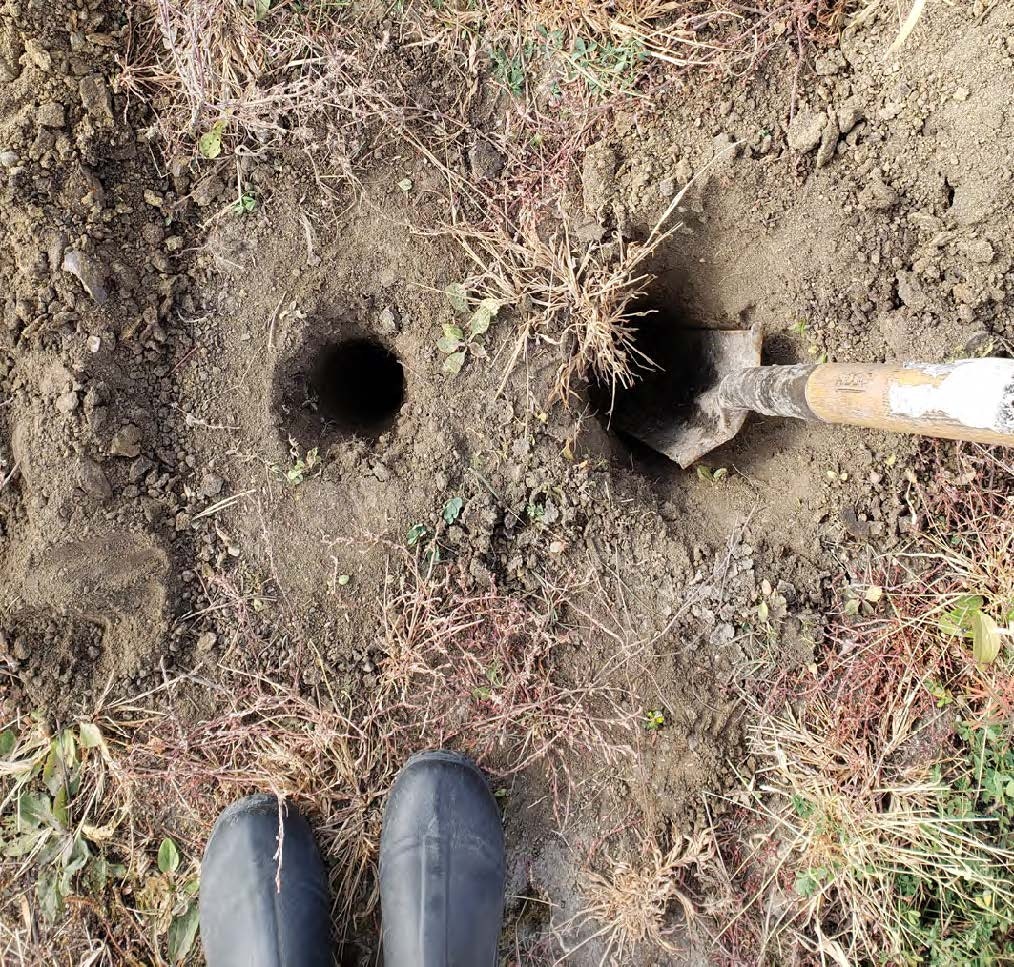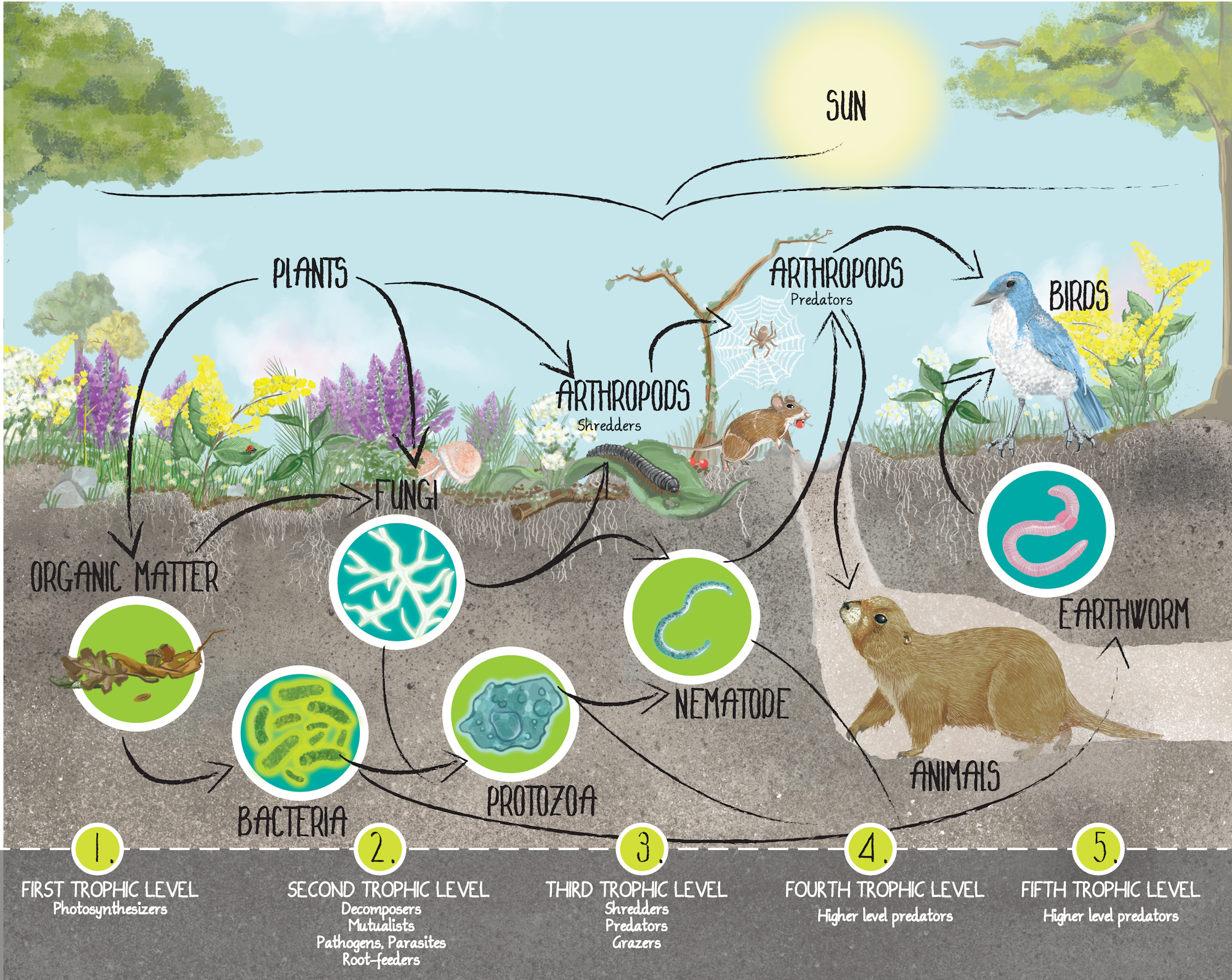Soil Health Study

The District and Barr engineering staff are working to develop the Soil Health Program as part of our Ecosystem Health Action Plan (EHAP). The purpose of this program is to assess various functions of urban soils to better understand the relationship between plant communities, soil functions and characteristics, and hydrology. These findings will be used to establish baseline soil characteristics across representative ecosystems and to characterize what constitutes good and poor soil functions within our watersheds. These classifications will be used to provide further framework of how to improve soil function and implementing water quality and regulatory projects across the District.
What is Soil Health?
Soil health, per the Natural Resources Conservation Service (NRCS), is the "continued capacity of the soil to function as a vital living ecosystem that sustains plants, animals and humans". It is critical to preserve or re-establish soil health and functions, as soils contain their own ecosystems that work as vital parts of broader ecosystems. Properly functioning soil will allow for nutrient cycling and retention, support healthy and diverse vegetative communities, sequester carbon, allow for greater water infiltration and storage, as well as provide other environmental benifits.
Since the District has lots of developed landscapes, soil degradation has occurred in large part due to soil mixing and compaction through plowing and bulldozing. Degredation has also occured through the elimination of native plants through development. Native vegetation supports good infiltration through root penetration and support of the microbial community and promotes a healthier ecosystem. Without native vegetation, soils will lose Degraded soils have poor soil structure that limits stormwater infiltration while increasing runoff. With increased runoff often comes erosion with sediment and nutrients deposited into downstream water bodies.
The Soil Food Web

Healthy soils have loft with considerable pore space that holds water and allows for oxygen exchange with the atmosphere. This is important for root growth. Soil loft is created by the actions of a diversity of organisms at every level in the soil food web. These organisms loosen soil and keep it open. They cause the development of soil pedons, or crumbs, that allow for air space in soils. Pedons are important for stormwater infiltration and erosion resistance. The food web also allows for soil nutrients to be held in the soil (both within their bodies and within pedons) and allow for their slow release to plants. The food web supports plant roots that reach deep down into the porous soils holding soil in place and over time leaving open channels as they die and decay. These channels allow large volumes of water to readily infiltrate into the soil.
Key Soil Health Principles
| Minimize disturbance | Soil disturbance can result from physical, chemical or biological activities. It can cause several issues including soil compaction, increase in runoff, increase in soil temperature, disturbance of soil microbes, reduced root mass and a diminished soil food web. |
|---|---|
| Maximize soil cover | Soil cover conserves moisture, reduces temperature, slows and reduces runoff and provides habitat. |
| Maximize biodiversity | Diverse plant communities promotes diversity of microorganisms in soil, thus promoting a healthy soil food web. |
| Maximize presence of living roots | Living roots provide food for soil microbial life, which in turn produce nutrients to be use by plants. |
District Soil Monitoring

Staff have been conducting soil assessments since 2022. In these assessments, staff are assessing soil functions of representative ecosystem types across our three watersheds. Representative ecosystem types are ecosystems that best represent the types of ecosystems that exist within out District. These ecosystems vary from more natural landscapes such as restored prairies, varying conditions of woodlands from 50% or more invasive species cover to 50% or more native species cover, old fields, to more developed landscapes such as residential lawns, mowed parkland and multi-use fields, and rain gardens.
Assessments consist of two main components: infiltration testing and soil sampling. Infiltration testing is conducted using a Modified Philip Dunne (MPD) infiltrometer which automatically measures and records infiltration rates and hydraulic conductivity of the soil. Hydraulic conductivity is the infiltration rate of the water once the soil has reached 100% saturation and the infiltration rate has become constant. This data helps identify areas which may have more capacity for capturing and storing stormwater and potentially reducing runoff. Soil sampling consists of collecting several 6" x 2" sub samples from just under the surface across a site, mixing them together, and removing a composite sample to be analyzed for a series of soil health indicators. Soil sample data helps identify how sites in different ecosystems measure up to one another in terms of soil health indicators. Other information such as soil profile observations and vegetation makeup is also collected. Collected soil samples are sent for analysis by the Cornell Soil Health Laboratory. The table below shows the soil health indicators measured for by Cornell.

Read more about the Cornell University Comprehensive assessment of soil health:
Cornell Comprehensive Assessment of Soil Health (CASH) manual.pdfCheck out an example soil health report prepared for the District by Cornell's soil lab:
NLLP-CASH-Report.pdfCheck out the District's basic guide to soil health:
Soil Pamphlet (digital view).pdfUSDA-NRCS urban soil health resources:
USDA Urban Soil Survey Flyer.pdfUSDA Basics of Urban Soil Health.pdfUrban Soil Primer.pdf


.png?ixlib=rb-1.1.0&or=0&w=720&h=720&fit=max&auto=format%2Ccompress&s=de9b5fc0c6f6cc737d2be425d8b7a5df)